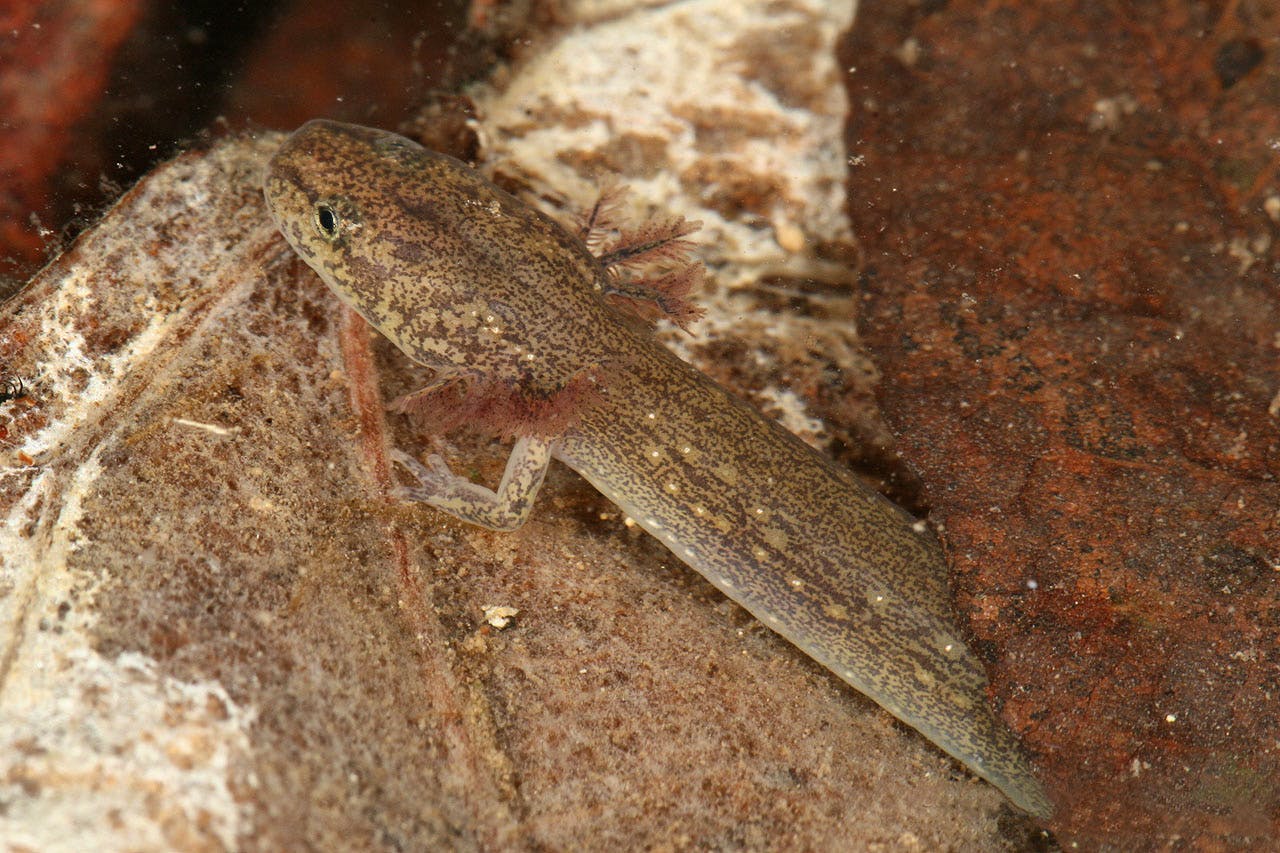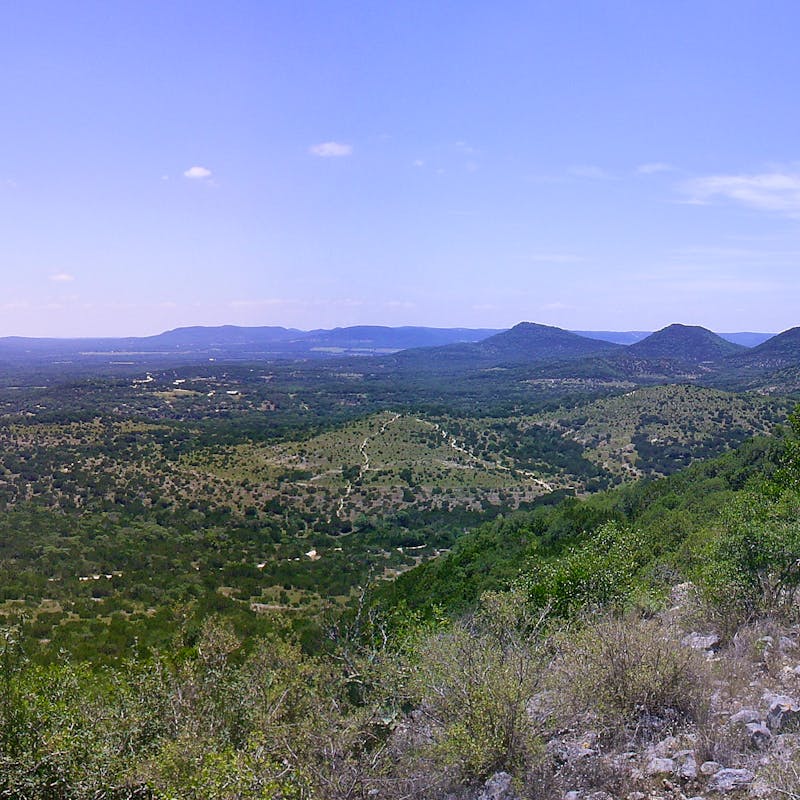The Top Tidbits About These Texas Treasures
Long moist bodies with blunt snouts. Salamanders are not typically thought of as cute, but they are top of mind for their important impacts on ecosystems and even communities! Take the four Texas Treasures salamanders — Barton Spring, Austin Blind, Texas Blind and Jollyville Plateau — who helped convince Texas cities to save water and rethink infrastructure projects. They may not be classically cute and cuddly, but they have certainly captured the hearts and attention of Texas Hill Country communities.
Get to know these salamanders, the food they eat, the roles they play in their habitats and what makes them such important environmental indicators.
Are salamanders lizards?
No, salamanders are not lizards. Despite their similar appearances, they are not the same type of animal. Lizards are reptiles with dry, scaly skin and salamanders are amphibians with moist, porous skin.
Salamanders also have slender bodies, blunt snouts, short limbs and the presence of a tail in both larvae and adults. The Texas Treasures salamanders are unique in that they retain some features of their larval stage. They never lose their gills, tail fins, larval skin coloration and wide heads. This retention helps them live in dark, damp ecosystems like caves.
What do each of the four salamanders look like and how did they get their names?
- Barton Springs salamanders are slender and grow to be around 2.5 inches long. They vary in color from dark gray to yellowish-brown and have red external gills. They are named after Barton Springs, which is fed from the Edwards Aquifer and is where these salamanders spend their entire life.
- Austin blind salamanders have a pronounced square-shaped snout, weakly developed tail fins and feathery gills. Adults are 2-3 inches long. This salamander has reflective, lightly pigmented skin with a pearly white or lavender appearance. They are named after their lack of image-forming eyes, which is a result of adapting to life in a primarily dark, underground habitat.
- Texas Blind salamanders are characterized by their lack of eyes, external red gills, slender limbs, a broad head and transparent-pale color. They grow to about 4-5 inches as adults. Most people might think because these salamanders are blind, they have trouble getting around, but they do not. They sense waves or changes in water pressure to find prey and to make their way through the limestone caves in which they live.
- Jollyville Plateau salamanders retain gills their entire lives and grow to about 2 inches long. The scientific name for this species is Eurycea tonkawae and they are also known as the Tonkawa Springs salamander. These names honor the Tonkawa people, who are a Native American tribe and were the earliest residents of the Round Rock area, north of what is now known as Austin.
Where do these salamanders live?
Texas Treasures salamanders live in cool aquatic habitats, particularly in and around the Edwards Aquifer. This aquifer is a unique groundwater system located more than 3,000 feet below Earth’s surface and is one of the most prolific artesian aquifers in the world. It is the lifeblood of the Texas Hill Country region, feeding local springs, rivers and lakes. It is critical to protect the quality of water returning into the aquifer so it can continue to safely provide for over 2.5 million people and sustain all the native plants and wildlife that call the Hill Country home.
Like all amphibians, salamanders are extremely sensitive to environmental change due to their permeable skin and, for some, lungless features. These unique features make them extremely sensitive to water quality and scarcity. If salamanders are unhealthy or the population plummets, it’s a warning sign that something is wrong within the habitat.
What are the chances someone would see one of these salamanders?
It is very rare to see a Texas Treasures salamander in the wild because most of them are found underground in caves and in protected areas. However, of the four, the Jollyville Plateau salamanders offer the best chance of being spotted because they are spring dwelling and do not spend their entire lives underground.
Visitors lucky enough to spot one of the salamanders should report the sighting to iNaturalist, a community science app, for record keeping and then admire it from a distance. These animals are very sensitive, so they should not be handled or held.
What do salamanders eat?
Texas Treasures salamanders are carnivorous, eating invertebrates (insects), crustaceans and other small aquatic animals. Barton Springs salamanders feed on tiny aquatic crustaceans and other small aquatic animals like snails and adult riffle beetles, while Austin blind eat aquatic macroinvertebrates (insect nymphs or larvae) and may eat juvenile salamanders or salamander eggs.
Although they are tiny, Texas Blind salamanders are top predators. They hunt amphipods, blind shrimp, small snails and other invertebrates by moving their heads from side to side and sensing water pressure waves created by prey in the still underground waters. They really give a new meaning to what traditional predators look like!
What key functions do these salamanders play in their environment?
Beyond serving as predators, these salamanders are also prey for crayfish and giant water bugs (except for the Texas Blind, who is thought to be the top predator in its environment).
The vulnerability of these salamanders makes them great indicators of water conditions. When they are present and thriving in a habitat, the water is likely clean and plentiful. However, the reverse is also a telltale and may indicate the presence of toxic pollutants and chemicals. Salamanders in the springs are like the canary in the coal mine of old.
What are some of the biggest threats to these salamanders?
Each Texas Treasures is endemic to its restricted habitat. Urban runoff, pesticide runoff and soil erosion reduce groundwater supply and threaten water quality. Pesticide runoff has also been linked to deformities and deaths in salamanders.
Low flow conditions in the Edwards Aquifer and at Barton Springs from overuse of water also impact these animals. These conditions can be from drought, over pumping and inefficient use of water.
How can people help protect salamanders?
- Share these fun facts about salamanders to raise awareness about these unique animals! You can also learn more about all seven Texas Treasures here.
- Eliminate or limit the use of lawn chemicals and pesticides.
- Keep trash and pollutants out of natural waters.
- Practice water conservation by only running water when necessary and turning the faucet off when possible.
- Reduce the impact of invasive species. Do not release aquatic plants, pets or exotic animals into the environment.
- Support organizations, like Defenders of Wildlife, who are working to save these unique salamanders and their habitats!












